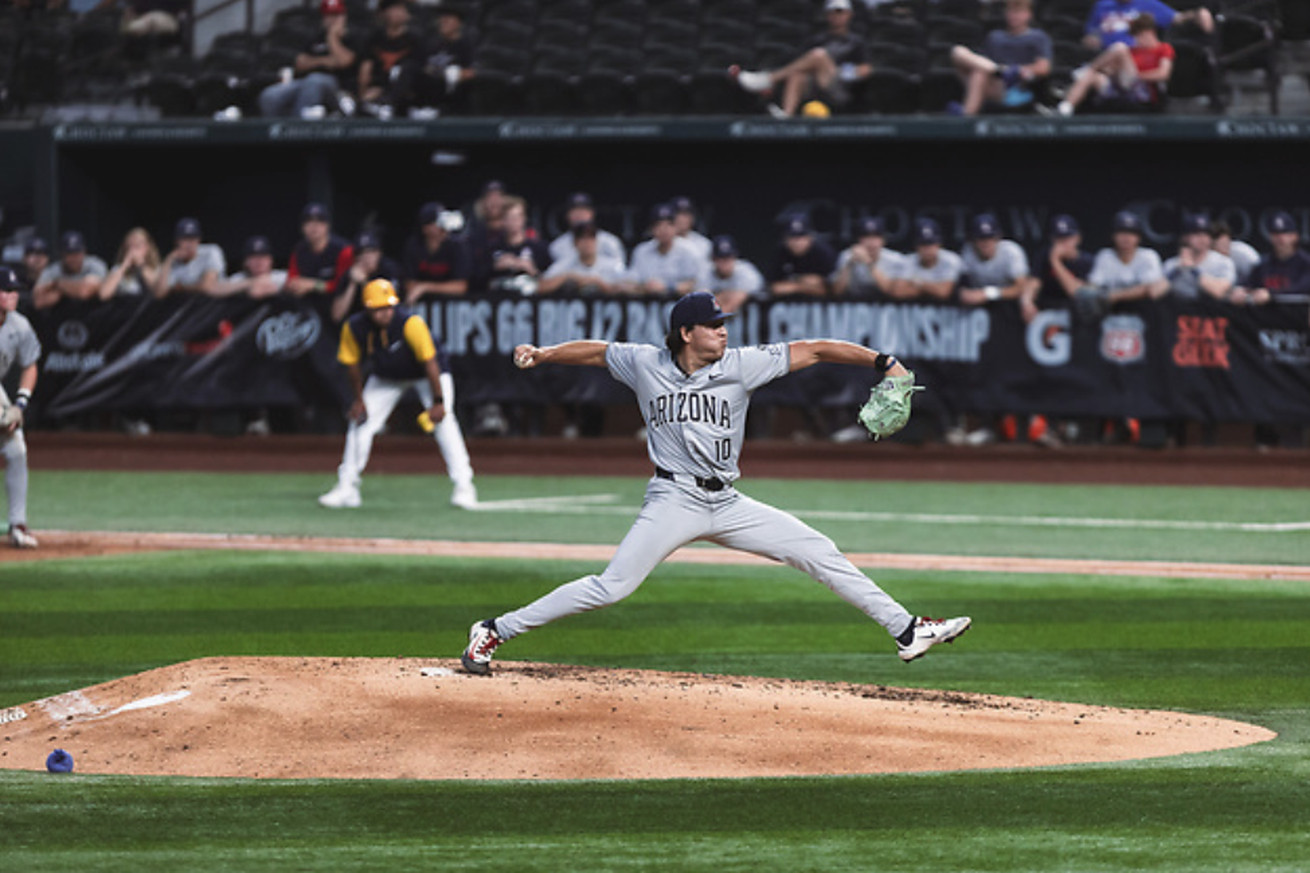
“Momentum is the next day’s starting pitcher” — Hall of Fame manager Earl Weaver
Arizona is headed into the NCAA Tournament on a 5-game win streak, its longest since March, and the biggest question mark entering the 2025 season has become its biggest strength.
The 2-1, 10-inning win over TCU in the Big 12 Tournament final marked the fourth consecutive game in which the Wildcats (39-18) allowed one run. That hadn’t happened for the UA since 1974, when it held seven consecutive opponents to one or fewer runs.
It’s been a collective effort, but Arizona’s starters have led the charge. Sophomore Owen Kramkowski, senior Raul Garayzar and freshman Smith Bailey have combined to allow three earned runs over their last 28 innings, translating to an 0.96 ERA.
Pitching was the big question mark for Arizona headed into this season. Gone were a trio of starters who combined to throw 272 innings before each getting taken in the 2024 MLB Draft, and in their place was a starting rotation that would feature two arms making their first career collegiate start.
For most of the 2025 season, though, Arizona’s pitching staff held its own. A deep bullpen took pressure off the starters to have to go too deep, and after back-to-back wins over TCU at Hi Corbett Field in early May the Wildcats’ ERA was a respectable 4.50, only slightly above the 4.46 mark from last year’s Pac-12 regular season and conference tournament champs.
But then came a 6-game stretch in which the UA pitching struggled mightily, starting with a 13-6 loss to TCU and continuing with a disappointing home series loss to last place Utah in which it allowed 28 runs. Then came a 13-4 loss at Houston, which was hitting .220 in Big 12 play.
Arizona’s ERA had surged to 5.07. That wasn’t going to cut it in the postseason, and if the losses kept piling up just making the NCAA Tournament might have been in jeopardy.
Then came a move by pitching coach Kevin Vance that changed everything.
Vance had already swapped his No. 1 and 2 starters, moving Kramkowski to the top spot and sliding redshirt sophomore Collin McKinney back. But McKinney, a transfer from Baylor, could not go deep in games due to too many walks and hit batters, and he lost his spot in the rotation for the final weekend of the regular season.
In his place was Garayzar, who had started a handful of midweek games but otherwise was used in relief. He made his first Big 12 start on May 16 at Houston, going 4.2 innings and allowing only four hits with one run in a 14-6 victory.
The next day Bailey, the first UA true freshman to make 15 or more starts since Kurt Heyer in 2010, had arguably the best outing of his career by going six in an 8-1 win to wrap up the regular season.
Kramkowski, who had a 2.70 ERA in April that included an 8.2-inning performance at ASU, had allowed 14 earned runs in 14.1 innings in three May starts before tossing six shutout frames against BYU in the Big 12 Tournament opener. Garayzar then followed with his own six scoreless innings in the semifinal win over West Virginia ahead of Bailey allowing a run in the first but nothing else over 5.1 innings in the conference title game.
Before the current win streak, Arizona’s starting pitchers had recorded four quality starts (six or more innings allowing three or fewer runs) and that had begun to tax the bullpen. Juniors Casey Hintz and Garrett Hicks, who have combined for 50 appearances and 86.1 innings, had lost their effectiveness and were getting hit hard. Hunter Alberini, Matthew Martinez, Eric Orloff and Julian Tonghini were good some outings, not so good the other, making it hard to get the ball to closer Tony Pluta.
But over the last five games the pen has been nails, and not getting overused has likely helped their cause. Over 18 innings they’ve allowed four earned runs, and in the Big 12 final the relievers combined for 4.2 scoreless frames with two hits, four strikeouts and no walks.
But as the Weaver quote reminds us, that can all change in a blink. Last year Arizona’s starters were lights out all season, including in the Pac-12 Tournament when Clark Candiotti threw seven innings of 1-run ball in the semifinals and Cam Walty went eight strong in the final.
A week later, as a regional host, Candiotti and Walty were tagged for 11 runs in 10 innings and the Wildcats went 0-2. Even the 1974 team can attest to how quickly things can go south, as that squad was 58-4 entering the NCAA tourney only to lose consecutive games at Northern Colorado.
The 1974 team finished with a team ERA of 2.07, best in school history, but allowed six runs in each regional game. That had only happened six times during the regular season.